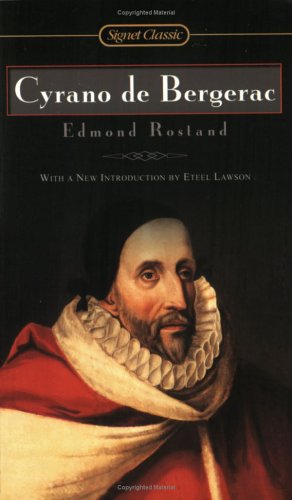All Nonfiction
- Bullying
- Books
- Academic
- Author Interviews
- Celebrity interviews
- College Articles
- College Essays
- Educator of the Year
- Heroes
- Interviews
- Memoir
- Personal Experience
- Sports
- Travel & Culture
All Opinions
- Bullying
- Current Events / Politics
- Discrimination
- Drugs / Alcohol / Smoking
- Entertainment / Celebrities
- Environment
- Love / Relationships
- Movies / Music / TV
- Pop Culture / Trends
- School / College
- Social Issues / Civics
- Spirituality / Religion
- Sports / Hobbies
All Hot Topics
- Bullying
- Community Service
- Environment
- Health
- Letters to the Editor
- Pride & Prejudice
- What Matters
- Back
Summer Guide
- Program Links
- Program Reviews
- Back
College Guide
- College Links
- College Reviews
- College Essays
- College Articles
- Back
The White Plume!
Throughout Cyrano de Bergerac by Edmond Rostand, a white plume, or panache, is repetitively mentioned in respect to the main character, Cyrano. The white plume is an important symbol in this play as it enhances the reader's ability to imagine, and recreate Cyrano's character. Edmond Rostand uses many clever similarities and immortal references in his play to symbolize his characters and pique his readers' interest. The white plume is one of the recurring symbols in this piece of writing, and its meaning is crucial for a reader's full understanding of the play.
In nature, a plume can be anything from a large, flamboyant feather, to a clearly evident trail or column. In any case, plumes are largely visible, and showy. When mating season occurs among many species of birds, males begin to reveal their great plumes of pride. The bright plumes provide a simplistic purpose of drawing attention and attracting mates. Though the showy feathers may make it easier for females to locate more preferable males, they also make the males more vulnerable prey. The males take this risk, and brave flirtatious ruckuses to prove their courage and worth. Birds hold their plumes high in courageous attempts to prove themselves. A white plume is the pride and honor of a bird, and its symbol of bravery.
Before stealth and camouflage, battles were fought in conspicuous uniforms, clearly displaying an army's numbers and position. Then, it was thought cowardly to hide unseen in the brush, while a courageous norm to face your opponent as a “man.” In battle, a white plume is a colonel's ranking mark; it distinguishes him as a leader, and serves the straightforward task of revealing his position to his troop. However, the display of rank may also leave the officer as more of a target for opposing guns. Though it is an honor to wear a white plume, the pride comes with great danger and risk. A white plume is worn with bravery, and represents the courage, honor, and pride that goes with it.
Throughout Act IV Edmond Rostand most cleverly illustrates Cyrano's character by involving him in courageously recovering de Guiche's white plume. When de Guiche outwits the enemy by casting away his white plume, he sees the gallant symbol as a limitation, and throws away his rank and pride to slink away unseen into the night. However, Cyrano retrieves the plume from an “impossible” area, in plain sight of the enemy, to prove that the white plume represents an elevated meaning of honor. Cyrano proves as well that he would have fought his way out with all of his pride intact, while wearing his white plume through the dangers to represent this fact.
In Cyrano de Bergerac, Cyrano's white plume is mentioned repetitively. It displays his courage, pride, honor, and self confidence. Cyrano was a proud, witty character, who finally felt fulfilled by his death after decades of dissatisfaction. Cyrano's pride was exhibited in his poetics and his swordsmanship, as he would risk any danger to prove himself, and sacrifice much comfort to provide comfort. In this play, the white plume represents honor, pride, bravery, and glory. Cyrano may have been a stubborn braggart, he however, held his head high and flaunted his white plume.
Similar Articles
JOIN THE DISCUSSION
This article has 0 comments.

